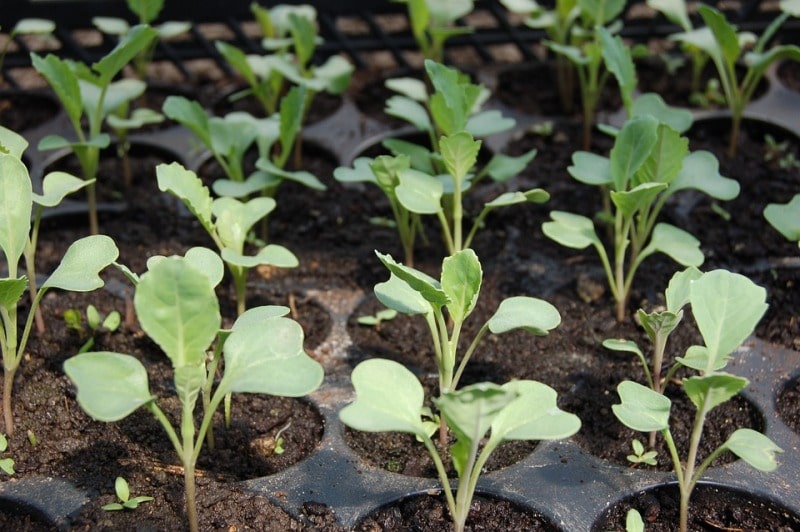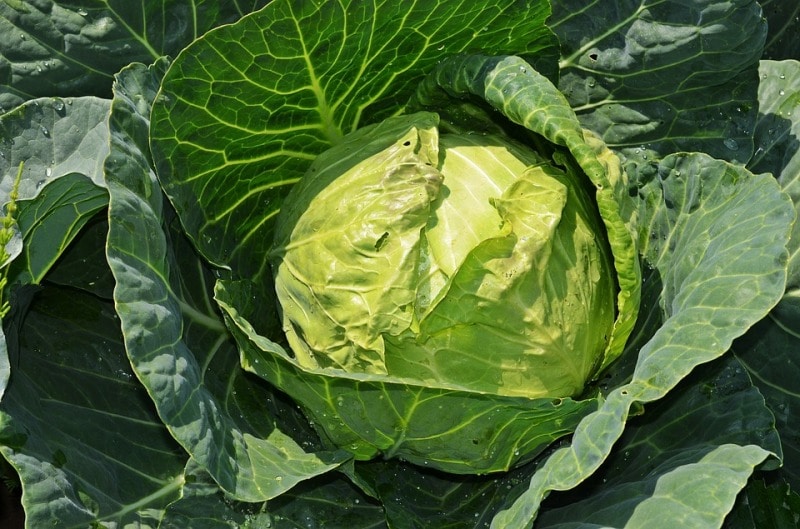A step by step guide for growing hydroponic cabbage
Today, we learn the basics of hydroponic cabbage growing, planting and care along with the required hydroponic nutrient solution of cabbage. You can apply these rules indoors, outdoors. Cabbage is one of the cole crops (derived from Danish word “kool”), which are varieties of the species Brassica oleracea. (Cabbage is Brassica oleracea var. capitata) These comprise of broccoli, kale, cabbage, and Brussels sprouts, among other things. You can spot cabbage in any store or market or underneath any cheesy sandwich which makes it a desired vegetable to grow. Apart from the versatility and easy-to-cultivate nature of most brassica varieties, a growing awareness of the health aspects of this diverse range of plants has observed demand rapidly increasing amongst consumers and home gardeners especially. Growing cabbage indoors or growing cabbage in water is rewarding as it will provide you fresh organic supply moreover it is a profitable deal.
Research experiments have proven that hydroponically raised brassicas respond well to manipulation of the nutrient solution to advance their compositional quality and levels of bioactive compounds present in them along with its yield.
So let’s discuss how to grow cabbage at home that too with the help of hydroponics like other kale crops hydroponic broccoli, hydroponic cauliflower, and hydroponic Brussel sprouts principle is same but care must be taken about cabbage growing stages. Hydroponic cabbage is a fairly simple crop to grow in soilless cultures.
Since cabbage is basically raised for its head which may be smaller or large depending upon the varieties used so it requires a system which can provide sufficient space to grow and show its full vigor usually systems like Kratky, NFT, Deepwater culture, floating raft beds and aeroponics are commonly used for growing cabbage in containers hydroponically.
How to grow cabbage from seed

You may also be interested in How to Grow Lavender Indoors.
One of the best ways of propagating cabbage in the hydroponic system. Cabbage is a cool-season crop planted in early spring or mid- to late summer. Cabbage grows well in temperatures ranging between 65°F and 75°F (18-24°C) and can survive cold temperatures down to 25°F (-4°C).
For growing cabbage where summers are warm, you can sow the seed of an early-maturing variety in early spring. Regions where summers are cool, plant seed in mid- to late spring and you can have early winter harvest even in indoor conditions too.
There are many varieties of cabbage:
Savoy
Loose-leaf
Ballhead
Red, green, purple, or white cabbage
- Dynamo: disease and split resistant early season
- Fargo: green, early maturing
- Primax: open-pollinated, split resistant, early season
- Red Express: early maturing;
- Tender sweet: suited for midseason sowing, green, disease, and split resistant
You can easily fetch seeds of above- mentioned varieties from any horticultural store online as well as in the market. The best thing about cabbage is usually its seed remain viable for about 4 years. For top germination rates, raise seedlings in a little warmer than mature crops (65–70ºF). Scarification of seeds can also be done before sowing which will enable seeds to sprout and this also increases germination rate. Start seeds germination indoors 6 to 4 weeks prior to the last frost in spring or 12 to 10 weeks before the initial frost in autumn for a fall or ready winter crop. For planting seeds either you can follow traditional on the ground method or you can also opt for starter plugs of coco peat.
After being planted, seeds will germinate within 4–7 days at a favorable temperature of 77°F (25°C) and will be ready for transplanting in 4–6 weeks later or you can immediately transfer them in system as soon as they attain a height of 4 to 6 inches (10-15 cm) with 2- to 4 true leaves.

Hydroponic cabbage planting and care
Cole crops are extremely sensitive to deficiencies of the two trace elements i.e. molybdenum and boron. These elements can be applied to seedlings as a foliar spray about a week prior to their transplanting.
When transplanting make it sure that you don’t over plant the space you have for growing cabbage. Putting too many plants on one reservoir will definitely increase the maintenance requirements or plants may face nutrient stress. You should maintain a space of about 18in (45cm) between each seedling s that the system doesn’t overcrowd.
Sunlight of 6 hours is sufficient for the developing cabbage you can compensate this with using grow lights LEDs or Fluorescent lights in indoor setups.
You may also check Growing Lemon Tree in Pots.
The nutrient solution of hydroponic cabbage

There are plenty of hydroponic nutrient solutions designed for growing cabbage and you can easily get them in your cart from any online store. These dedicated nutrient formulations consist of the right amount of nutrient balance for the crop with user manual for grower’s convenience. All you need to do is maintain the ideal pH conditions which are the same for the question of how to grow Napa cabbage.
In following, conditions hydroponic thrive well;
pH range: 6.2–6.6
EC: 2.5–3.0
Temperature: 60–70ºF (But frost tolerant)
For harvesting fresh homegrown cabbage use a sharp knife carefully to cut cabbage heads once the heads have firmed up. Depending on the type of cabbage and the size of head desired, the crop will be ready for harvest 9 to 11 weeks or 65 to 100 days. Spring cabbages variety can be harvested young and loose as greens for achieving repeated cutting, or it can leave to grow attached to roots to form a tight head of leaves.
Another issue of growing cabbage is unwanted and devastating pests such as aphids, cabbage worms and loopers, cabbage worms, and cutworms which might not be a headache in the indoor hydroponic system but yes in outdoor conditions this has to look after well. In outdoor hydroponic systems you can provide netting to the growing cabbage this will reduce the pest incidence.
Cabbage is a heavy feeder, so it will take up nutrient solution much faster than a crop like hydroponic tomatoes. Be sure to keep a watchful eye on the nutrient levels no matter what type of hydroponic system you are using to raise cabbage. Make sure that they don’t run out of nutrient-enriched water and get dry as that will put them into nutrient and water stress, which is an open invitation to pests and diseases even in the indoor hydroponic setup.
Cracking is one of the major issues of cabbage, it can happen when the crop is fully matured. The cabbage becomes dense and heavier causing it to burst unless the growth is stopped. The reason behind cracking of cabbage head is an uneven growth condition. Starting from the small, tight head in dry condition if the situation suddenly changes to adequate humidity available during maturity the internal water pressure leads to bursting of cabbage which equals to ruined crop. So make sure you maintain the growing conditions throughout its growth stage.
Avoidance of temperatures over 79°F helps to prevent another main problem of cabbage which is quite common in other brassica crops it is bolting also known as premature seeding or shooting to seed, which is the premature formation of a flowering stem or seed stocks. Bolting is characterized by elongation of the plant in an upward direction and loose formation of leaves inside the cabbage head. This turns the cabbage tasting undesirable and bitter. To avoid this condition make use your plant has proper excess to nutrient-enriched water, an adequate amount of phosphorus and calcium. Do not overexpose growing cabbage to sunlight offer them some shade in bright sunny days. Grow bolt resistant Chinese cabbage which is early maturing. Practice “cut and grow” formula which means picking off outer leaves of cabbage this will encourage the plant to produce more leaves rather than flowers.
You may be interested in Coriander Farming Profit, Cost, Project Report.
Hello,
I am growing Cabbage in hydrophonics system. Now its in 5th wk and maintaining TDS upto 600. the leaves are showing yellow scattered spots. WHAT SHOULD I DO, PL SUGGEST?